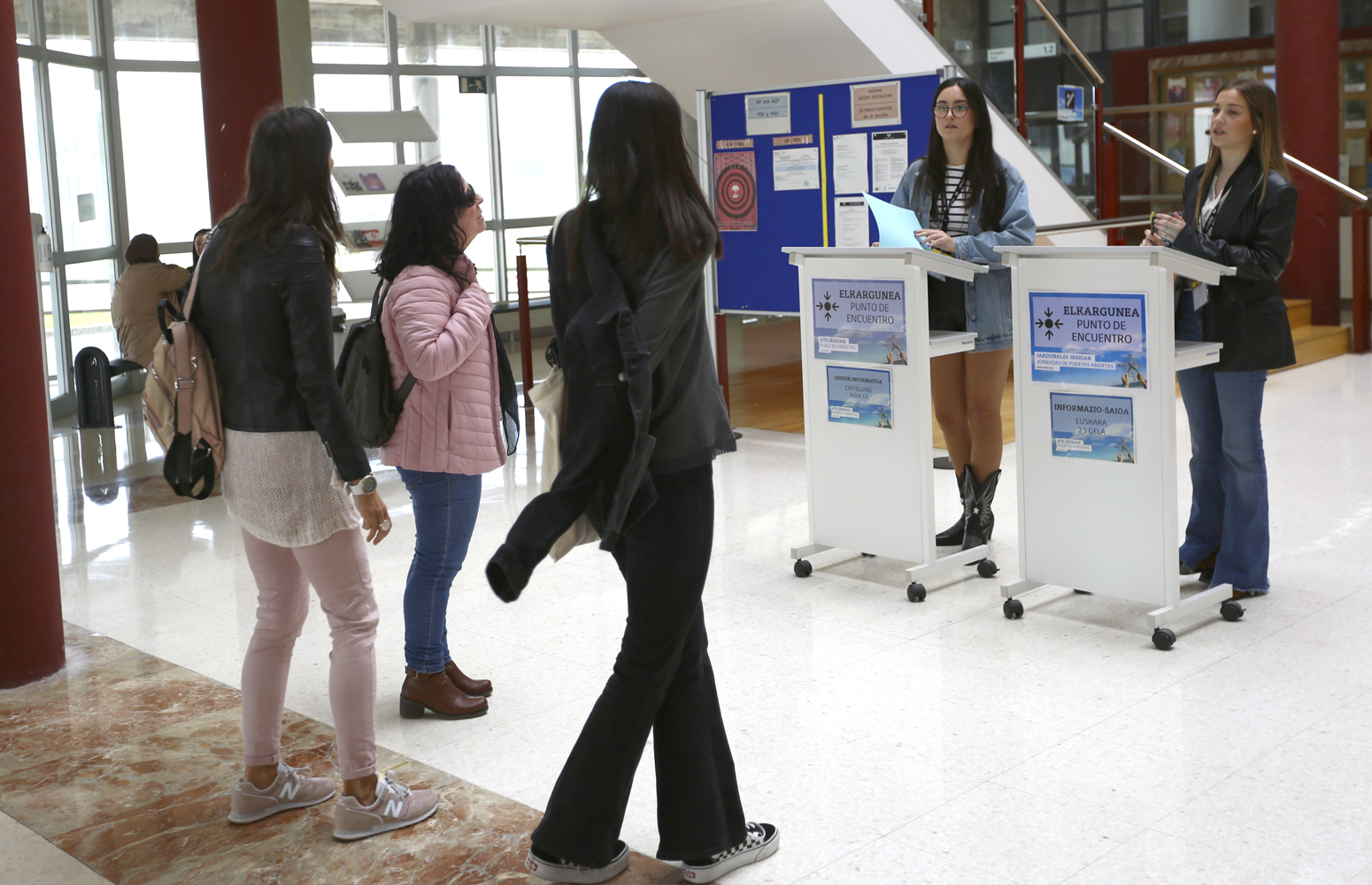El grupo de investigación IBeA de la UPV/EHU ha utilizado una metodología no destructiva para determinar el rol de determinadas algas, líquenes, musgos, cianobacterias, etc. que pudieran estar provocando exfoliaciones y laminaciones que degradan la Roca Sagrada de Machu Picchu, uno de los símbolos más importantes de la ciudad arqueológica peruana. Esta investigación está integrada en los trabajos de investigación que dirige el Parque Arqueológico Nacional de Machu Picchu para la conservación del entorno.
-

1.000 estudiantes se han reunido presencialmente con empresas que buscan talento joven
-

Jule Goikoetxea: «Si queremos nuevos sujetos, se debe incidir en las relaciones de poder que los crean»
-

Jornadas Puertas Abiertas
-

Ocho mujeres que cambiaron la farmacología
-

Nuevo equipo en la dirección de la Estación Marina de Plentzia PiE-UPV/EHU
Especies biocolonizadoras ponen en riesgo la conservación del granito de Machu Picchu
Un estudio de la UPV/EHU ha evaluado el rol de los microorganismos que colonizan la Roca Sagrada de Machu Picchu en su estado de conservación
- Investigación
Fecha de primera publicación: 13/02/2019

La Roca Sagrada es uno de los monumentos más importantes del santuario inca Machu Picchu, situado en la región de Cusco en Perú. Se trata de una roca granítica que la cultura inca utilizaba para el culto religioso, pues estaba considerada como la puerta de entrada entre la tierra y el cielo. Debido a la localización y las condiciones climáticas del lugar, numerosas rocas de la ciudad arqueológica están afectadas por biocolonizaciones; concretamente, en la Roca Sagrada “se observan diferentes exfoliaciones; es decir, presenta pequeñas pérdidas de material, que van laminando pequeñas zonas de la roca”, explica el doctor y profesor de la UPV/EHU Héctor Morillas, que está colaborando en una serie de trabajos de investigación relacionados con Machu Picchu. “Es cierto que la roca sufrió un deterioro por la colonización biológica, pero es un deterioro mínimo —apunta Morillas—. No existe ningún riesgo de desintegración de la Roca Sagrada, y, además, los especialistas del área del Parque Arqueológico Nacional de Machu Picchu están controlando y monitoreando el entorno de manera permanente”.
El estudio, dirigido por el PAN Machu Picchu, Dirección Desconcentrada de Cultura Cusco – Ministerio de Cultura de Perú, ha sido realizado por el doctor de la UPV/EHU Morillas, que actualmente imparte clases en el Departamento de Didáctica de la Matemática y de las Ciencias Experimentales de la UPV/EHU, en colaboración con el grupo de investigación IBeA del Departamento de Química Analítica y con el Departamento de Biología Vegetal y Ecología de la Facultad de Ciencia y Tecnología de la UPV/EHU.
Aplicando una metodología multianalítica no destructiva, los investigadores han determinado el rol que desempeñan las especies de líquenes, algas, musgos, cianobacterias, etc. que colonizan la Roca Sagrada en los problemas de conservación que presenta. Según explica Morillas, “estas especies, una vez que penetran en el material por algún tipo de pequeño deterioro que se haya ido formando, se adhieren al propio material para poder nutrirse de los minerales propios de la roca y lo van degradando. Con el paso del tiempo, estos microorganismos pueden provocar pequeñas laminaciones, que pueden derivar en la pérdida progresiva de esta roca”.
Monitorización de biopigmentos para determinar la profundidad
Una vez determinada la familia a la que pertenece cada una de las especies de microorganismos encontrados en numerosas micromuestras de la roca, así como qué biopigmentos excretan cada una de ellas, “realizamos un perfilado en profundidad, para prever hasta dónde podrían penetrar estos microorganismos”. De esta manera, los investigadores han concluido que “existe una amplia variedad de especies biocolonizadoras en la Roca Sagrada, la mayoría de ellas penetran a través del sustrato poroso y pueden ser uno de los posibles responsables del estrés que está sufriendo la roca en cuestión”, afirma el doctor Morillas.
Esta investigación es solo uno de los estudios que está llevando a cabo el grupo de investigadores de la UPV/EHU en este lugar. De hecho, se ha comenzado también con el diagnóstico del estado de conservación de diferentes construcciones, como templos, casas o áreas de meditación de la ciudad arqueológica; asimismo, se ha llevado a cabo un análisis del material de construcción que utilizaron en todo Machu Picchu y, por otra parte, “estamos estudiando las posibles alteraciones en el material granítico debido a posibles incorrectas restauraciones pasadas que se realizaron en ciertos lugares de Machu Picchu”. Por otra parte, el investigador ha realizado “un estudio de ecotoxicidad de la propia ciudad y de todo el entorno del parque arqueológico, en el que hemos analizado en el suelo, el aire y el agua de lluvia posibles contaminantes”. Además, Morillas ha analizado pinturas rupestres situadas en el parque, con lo que han determinado los materiales utilizados para su realización; “se cree que estas pinturas son muchísimo anteriores a la época prehispánica”. Para concluir, el investigador añade que “gracias a todo ello, estamos redactando las bases de un proyecto con varias universidades e instituciones de otros países para el estudio de conservación de lugares emblemáticos de la UNESCO”.
Información complementaria
El Parque Arqueológico de Machupicchu, Dirección Desconcentrada de Cultura Cusco – Ministerio de Cultura de Perú, es el encargado del trabajo de investigación y conservación del entorno desde el año 2009 hasta la actualidad. Este trabajo está dirigido por el Dr. Fernando Astete, director del PAN Machupicchu, y la bióloga Gladys Huallparimachi Quispe, responsable de los trabajos de investigación y conservación. Son ellos quienes realizan los trabajos de investigación y mitigación frente a impactos bióticos y abióticos, mediante controles sostenibles que no deterioran el entorno natural y cultural, para la protección y conservación del SHMP.
Referencia bibliográfica
- Evaluation of the role of biocolonizations in the conservation state of Machu Picchu (Peru): The Sacred Rock
- Science of the Total Environment, 654C, 1379-1388, 2019
- DOI: 10.1016/j.scitotenv.2018.11.299



